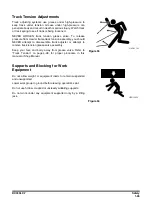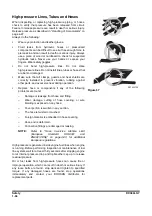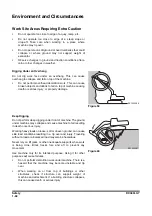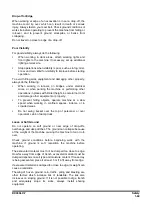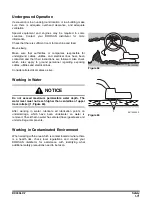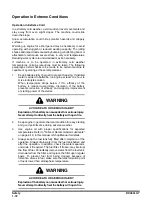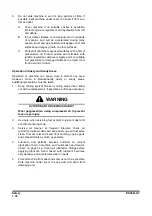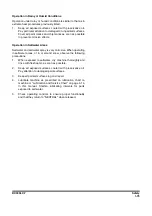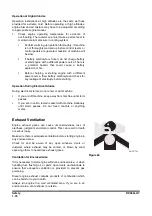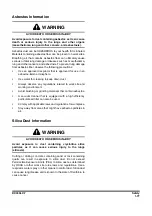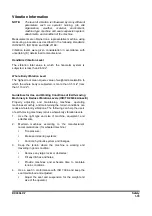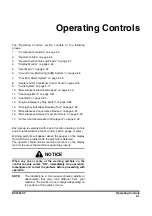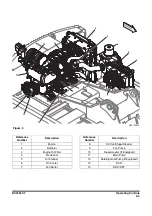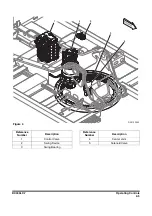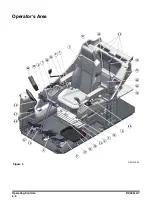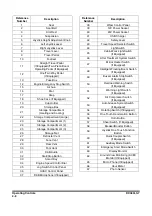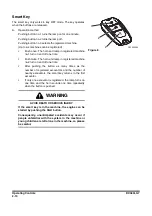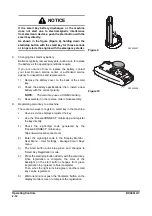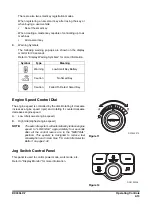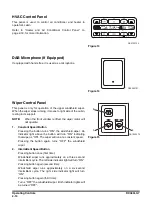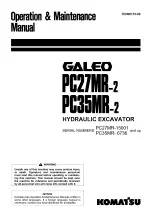
1-79
DX380LC-7
Vibration Information
NOTE:
The level of vibration is influenced by many different
parameters such as operator training, job site
organization, weather, material, environment,
machine type, machine and seat suspension system,
attachments, and condition of the machine.
Measurements are obtained on a representative machine, using
measuring procedures as described in the following standards:
ISO 2631/1, ISO 5349, and SAE J1166.
Vibration levels were given consideration in accordance with
uncertainty (K) determined to manufacturer.
Hand/Arm Vibration Level
The vibration total value to which the hand-arm system is
subjected, is less than 2.5 m/s
2
.
Whole Body Vibration Level
The highest root mean square value of weighted acceleration to
which the whole body is subjected, is more than 0.5 m/s
2
(less
than 1.15 m/s
2
).
Guidelines for Use and Working Conditions of Earth-moving
Machinery to Reduce Vibration Levels (ISO/TR 25398 Annex E)
Properly adjusting and maintaining machines, operating
machines smoothly, and maintaining the terrain conditions can
reduce whole-body vibrations. The following can help the users
of earth-moving machinery reduce whole-body vibration levels.
1.
Use the right type and size of machine, equipment, and
attachments.
2.
Maintain machines according to the manufacturer's
recommendations: (for wheeled machine)
•
Tire pressure;
•
Brake and steering systems;
•
Controls, hydraulic system and linkages.
3.
Keep the terrain where the machine is working and
travelling in good condition:
•
Remove any large rocks or obstacles;
•
Fill any ditches and holes;
•
Provide machines and schedule time to maintain
terrain conditions.
4.
Use a seat in conformance with ISO 7096 and keep the
seat maintained and adjusted:
•
Adjust the seat and suspension for the weight and
size of the operator;

